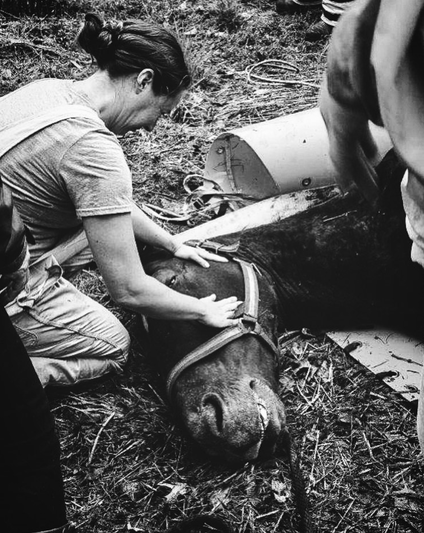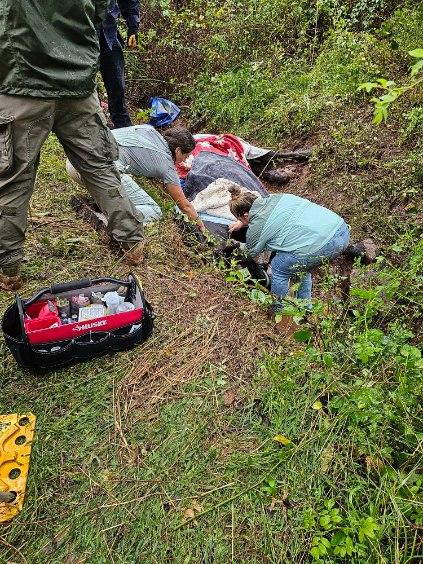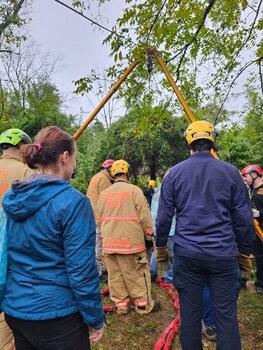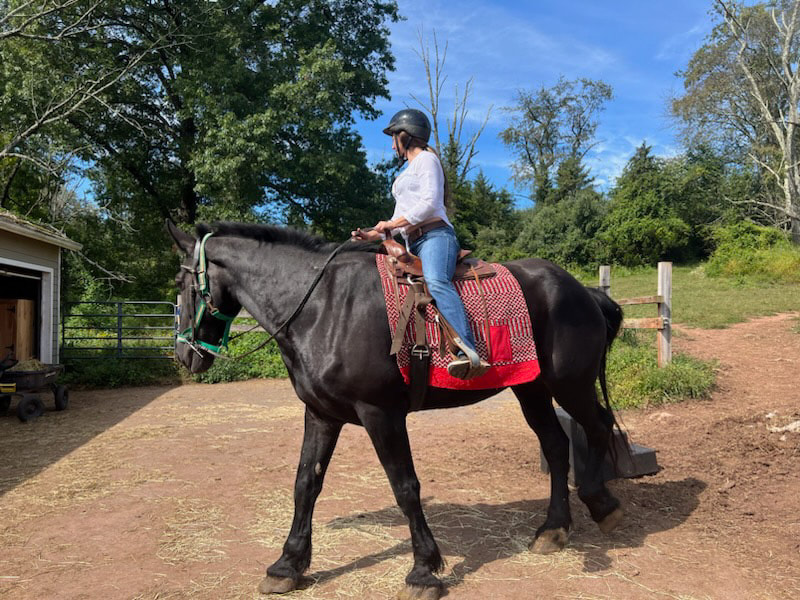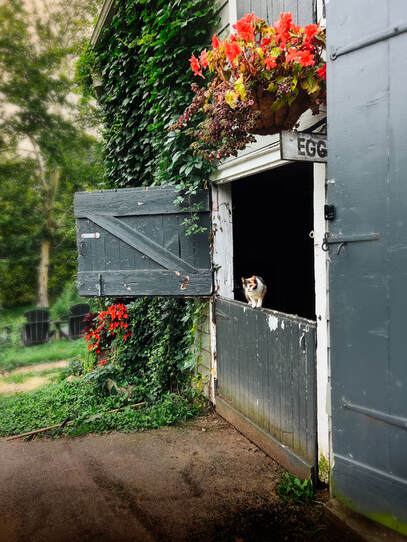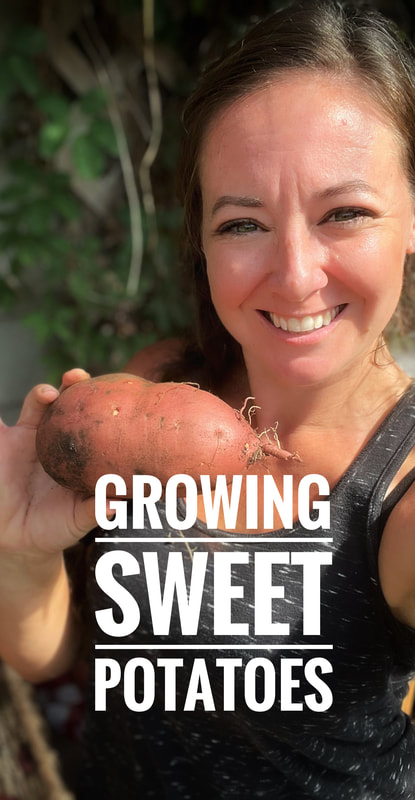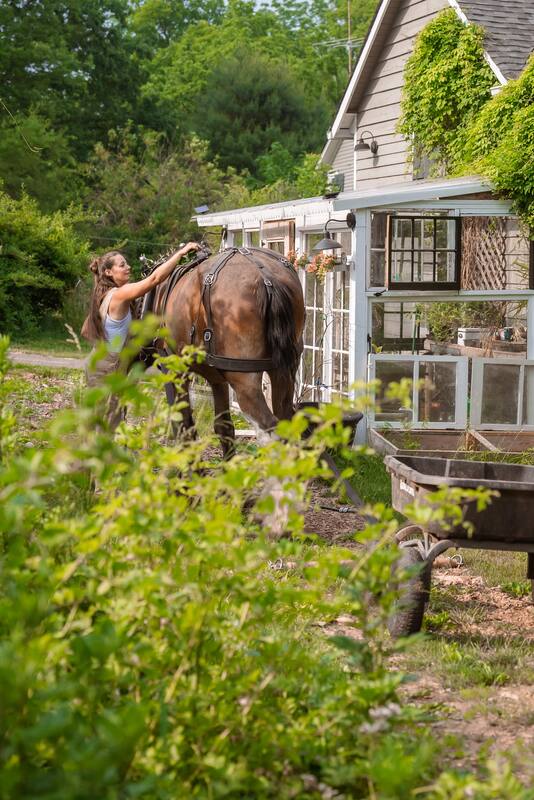|
Time Stamps: Forsythia 1:05 / Goumi 1:41/ Sea Berry 2:06 / Food Forest DIY 3:12
Autumn Olive (aka Russian Olive) grows abundantly on my property, in my county, and in my state. As we move through our food forest areas, we're replacing this beautiful, edible, yet invasive specie with a more appropriate alternative. 1. Forsythia doesn't have edible fruit, however, its blossoms are edible in spring. This grower spreads quickly, however, isn't currently on the USDA's list of invasive species. The blossoms also attract hummingbirds and pollinating insects and offer shelter during the winter months for small birds, insects, and wildlife. These shrubs grow well in poor soils, on banks and hillsides, and create dense hedges for privacy. Great for soil erosion too. 2. Goumi offers edible berries that are tart and more suitable for cooking or jam making than eating raw. These plants fix nitrogen into the soil, assist with erosion by holding soil in place, grow 6-10' tall and wide, and are self-fertile. They thrive in USDA growing zones 4-9. Goumi doesn't mind poor soil OR poor air quality and has no major pest or disease issues. 3. Hypophae / Sea Berries / Sea Buckthorn are thick growing shrubs which produce thorns to protect their edible berry clusters. The small berries are an orange-yellow color and are said to taste like a cross between a pineapple and citrus. The berries contain 7x more vitamin C than lemons and provide a food source to the home, resident birds and wildlife. The Sea Berry is suited for zones 2-9 and fixes nitrogen into the soil. To produce fruit, a male and female plant is needed (note one male to every four female plants). While it thrives in full sun, on hillsides, in poor soil, and in many soil consistencies, this shrub hates shade so isn't on the invasive species list by the USDA. Imagine waking up and heading outside to feed the animals their breakfast. It's 6:30am, a day like any other, despite the second day of rain from Tropical Storm Ophelia. The ground is soggy, the sheep are cranky because they want to graze out of the safety of their barn shelter, and the ducks are impatiently calling for their feed. You reach the horse stable and realize only 2/3 of your herd is there--one horse is missing. I chose not to panic at first; perhaps he was sleeping in a stall because of the rain, and I couldn't see him from the doorway. I grabbed feed for the other two, got them settled and walked to Sholto's. But he's wasn't there. I began scanning the fields from where I was standing and there was no sign of him. And why weren't my other two rattled or looking for him, by the way? When I change pastures, for example, or need to move the herd, it's Sholto I grab. The other two immediately follow. What would cause them to leave him alone? Or why would he have wandered off? I grabbed a lead rope and halter and started jogging up the muddy hill to my top pasture spaces. At this point I'm assuming an injury has happened or colic is taking place. But he's not in my top paddocks either. Now my curiosity turns to panic. Did someone take him overnight? Did someone lead him out? I was running past every fence line and nothing was out of order. Gates were still closed and latched. The charge on the solar panel was still in tact. Where was he? Had he jumped out? I checked tree lines and brushy patches. I ran inside to get Shawn to help. I burst into the room where he was still asleep and shouted, “Please help me! Sholto’s gone!” We both sprang outdoors and I started looking through nearby woods. Then I heard a rustle and a splash. It sounded like a large animal. I ran to a nearby ravine well outside the confines of pasture safety. Could he be there? With a sinking feeling I came to understand what my eyes were showing me. Sholto was laying on his side, slumped against the stream bank. His legs were covered in mud and I was unsure if they were broken. I used my voice to try and soothe him. He writhed wildly in response. Could I pull him out? I had a harness and a lead rope. I couldn’t lift him but would he be encouraged if I started pulling? I ran for Shawn. “Sholto’s in the stream!” I cried. Shawn came running and knelt near the head the horse on the soggy bank. “Should I call the fire department? Is that ridiculous? Do they lift horses?” I had no idea. Shawn simply said, “Do it.” Within thirty minutes three nearby county rescue and heavy lifting teams arrived. They literally set up a command station not too far from where Sholto was lying. They began to organize themselves, about thirty men dressed in various uniforms from firemen, to EMTs, police officers, rescue workers, and volunteer farmers and fist responders, and to formulate a plan for rescue as I called the vet. No reply. So I tried another. The emergency response veterinarian was thirty minutes out. My friends and neighbors came to offer aid and comfort. I had so many people rallying around Sholto. Heat blankets were cracked and laid over Sholto to restore body heat as he laid in the cold water of the ravine. He had been shaking, either in exhaustion, hypothermia, or nervousness for clearly hours. Teams began to erect a tripod over him which was connected to ropes and hand cranks. Bands and ropes were slid beneath him while a rescue skid, almost like a stretcher, was pieced together on higher ground for Sholto to be placed on once he was retrieved. "He's a rescue and he's afraid of men," I warned. "Please be gentle with him, and careful around him." Thankfully, my requests weren't ignored. The rescue workers were so calm, reassuring, and warm towards my horse, speaking slowly and calmly, petting him, trying to reassure him. At this point, we were waiting on the vet to arrive to sedate the horse so he could be lifted without thrashing, fighting, or tearing the bands. About one hour into the rescue mission the horse was sedated and rescue workers began to lift. Upon retrieval Sholto was placed on the ground and pulled on his stretcher far from the bank, and immediately he underwent emergency medical evaluation and care. He was clearly dehydrated so fluids were administered. “I’m worried about his myokymia,” the vet stated. “It could be from the drugs, but his eyes shouldn’t be twitching like that.” I was on the ground with my horse, sending as much love as I could. Surely this horse was absolutely exhausted, cold, and in need of rest. He hadn’t had water, no food. It had been raining all night from the tropical storm. Why couldn’t he just have time to recover from such trauma? “The drugs should be wearing off soon,” the vet said. We need him to roll to a sitting up position and he’s welcome to lay down with his head upright as long as he likes to get his bearings. This is how horses reacclimatize post surgery. We waited. And waited. Nothing was changing. The vet asked an EMT for glucose to introduce sugar into his bloodstream. There was still no effort from Sholto to right himself. “We need to come up with benchmarks,” the vet stated after some time. “We don’t want this to go on too long.” “I’m not ready to pull any plugs yet,” I responded. "Perhaps it's wrong to anthropomorphize this, but if I were in a ditch all night fighting to get out and couldn't, with hypothermia, I wouldn't want to stand yet either." The horse at my feet was snoring soundly. He needed to recover! But the vet disagreed. “I'm not asking you to make a decision yet,” she replied. “But this is concerning. I’m afraid he has a neurologic or central nervous system issue.” No. They were wrong. I felt in my heart that he just needed to recover. Video camera footage taken from the stable showed Sholto had not been with his heard since 8:15pm the night before. The other two horses had been in the stable without him. Potentially this horse could have been in trouble, trying to free himself, for 10 hours in the cold. But as time continued to pass, Sholto was not recovering. An hour or so later, the vet was highly recommending euthanasia. I do not have the medical knowledge nor experience the three on-site vets did. I had to set my emotions aside and place my full trust in them. I agreed. The vet ran for her kit and turned with the bright pink vial. And just as she was drawing the fluid, the horse rolled. And he stood. He stood! Everyone was silent with shock. Surely a miracle had just taken place. His front legs were shaky, understandably, but he was standing. “I love when they prove me wrong!” the vet yelled. I started to cry. I grabbed my horse’s face in my hands and held him, telling him what a good boy he was. He did so well! He pulled through! “Now what?” I looked to my vets' faces through tears. They explained he needed to be trailered to a nearby hospital to receive fluids, testing, and ensure he was fully sound. We just needed to give him time to acclimate to his feet, and take the 50-yard walk to the trailer waiting to haul him to help. We were going to walk away from this, I knew it. But Sholto didn’t want to walk. He didn't want to move. We waited. Eventually Sholto took several steps, but his wobbly legs couldn’t sustain him. He slipped on the walkway due to the awful conditions we were working in, slick with mud and water from the heavy traffic load of rescue workers. But he caught himself and balanced. Surely this was still good news. So we waited. And waited more. He would not go. And then he took his last step, and he collapsed. We tried. So many people tried. I even grabbed Nevin and brought him over to Sholto, hoping his herd would give him cause and energy to lift himself off the ground. But he was so tired. And his body seemed disconnected from his brain. He couldn’t do it. His eyes were twitching. And so quickly, and cruelly, the hope I had—the certainty that we were going to come out of this unscathed—vanished. I started fighting for Sholto. Trying to talk the vets into remembering the progress we’d made. The steps he’d taken. The balance he’d recovered when he slipped. But they continued to patiently explain to me that this was not something he would come back from. They believe that he had a stroke or a brain aneurism. His brain and body were not connecting. Upon trying to renter a catheter, the blood in his body had already clotted. He was already dying. The emotional roller coaster was unbearable. And now, six hours post finding Sholto, my adrenaline was wearing off. I was cold, exhausted, and without any ideas. I searched myself for any last suggestions, any last efforts I could make to save my horse. The one who had been so badly battered and arrived just four weeks before. The one who had just started warming up to me, just began to realize he was safe here. And I found the answer; I needed to let him go. I needed to accept the guidance I was receiving and humanely end his suffering. So I did. Sholto was euthanized on the trail where he fell under an open sky, surrounding by people who were rooting for him, loving him, caring for him. He spent such a short time with us at the homestead. So short. As he passed I heard in my head the voice of a retired cowboy friend who had told me, “God puts a certain horse in front of you for a reason.” I know the reason for Sholto. He had a horrible life of pain, abuse, starvation, neglect. I needed to be the one to show him compassion and love. And when he found it, he could finally stop his 14-year lifelong fight for survival, rest, and let go. Despite unknown past lives, health issues brewing, or behavioral challenges, I will not stop rescuing discarded horses. I believe in my heart that they deserve a second chance. And so, we will bring in another to fill our third stall, to offer respite to, and to provide a soft place to land, and to learn what love is. Even if just for a short time.
A thank you to my friend, Elizabeth, for the photos during Sholto's rescue. The sunflowers that require no annual planting: meet sunchokes (aka wild sunflowers) and Maximilian sunflowers. Of course they bring a sunflower vibe to growing spaces, but also have all the perks of perennials for the environment.
Tubers loosen compacted soils, blossoms feed pollinators, the woody plant tissue absorbs more carbon from the atmosphere than annual plants, they create a safe haven for predatory insects and birds, and they are edible. It’s said Maximilian sunflowers were planted around homes by the early settlers to deter mosquitos, and when their tubers are dried and added to bath water, they relieve pain and inflammation due to arthritis. And let’s not forget to mention the stunning living wall these plants create. Both sunchokes and Maximilian sunflowers spread by way of edible tubers. Therefore it's essential to plant these crops in a location with moist but well-draining soil. Too much standing water is cause for root rot, and will not only affect the harvestable roots but also threaten the life and productivity of the plants. If plants are allowed to continue to multiply without harvesting the tubers, a dense living wall will remain that can spread more and more every season. Meet Garlic, a new kitten here named by my kids. ☺️ Every addition is a balance on the homestead between what the farm needs and what nature already provides. As a permaculture practitioner, I assess every single element before bringing in something new… this is how an ecosystem is maintained.
In this case, we were down to one barn cat. I knew we’d likely need another before the temperatures plummet… a barn full of hay and animal feed (no matter how well protected) is a welcoming spot for country mice and rats. I waited to see what our resident rodent and owl populations were like, how many predatory inhabitants we have that could access the barn realistically with guard dogs around, and what stray cats (if any) might come by. Too many cats could reduce a food source other wildlife needs to survive so I wanted to be sure we had enough prey to support another cat. If I take a food source away from owls, kestrels, fox, etc., they’ll be more likely to prey on my birds or leave the farm all together; neither of which is the intention. And because this is social media, yes, I feed my cats multiple times per day. 😉 And so it was meant to be. We welcomed Garlic a few weeks ago. A skittish but most welcome new farm friend. Time stamps: On Finnegan: 0:15 // Meet the new horses: 1:00 // See the stable upgrade: 5:10
I have been putting off making this video because we recently endured a devastating loss on my permaculture farm; my partner and friend, Finnegan, passed away unexpectedly. While processing my grief, it was essential I find Dozer (my remaining Clydesdale mare) a stablemate because horses just don't do well alone. Very quickly, I found two beautiful horses we could offer a forever home to. Meet Sholto and Nevin, who are both already broke to ride and drive. In this video I'm sharing the new comers, talking about losing Finn, and showing the upgraded stable. A few amazing places to shop for a horse if you're open to adoption: Colby's Crew: https://colbyscrewrescue.org/ Horses Deserve a Second Chance: http://www.horsesdeserveasecondchance.com/
Sweet potatoes aren’t really potatoes. They’re tropical plants with edible roots in the morning glory family. As such, the harvest should be cured differently to create a sweeter flavor.
- Start by planting after the last frost. You can do slips or plant an entire sweet potato. Make sure the soil is loose and nutrient-dense as these are heavy feeding plants. - Apply a dense layer of straw or mulch at planting time to retain moisture and prevent weeds. I do 10-12” thick. Grow undisturbed all season—no pruning of vines is necessary. - Stop watering about 7-10 days before you plan to harvest. This prevents cracked skin on the potatoes. - Harvest with your hands if possible by carefully moving back the vines, soil, and mulch. Lift without a shovel to avoid puncturing the potatoes. - Sweet potatoes need heat and humidity to cure. I harvest mine when the forecast shows temps are soon to dip and the plant begins to yellow. Do not wash the tubers. - A shady dry table outdoors is great for curing. Sweet potatoes need 80°F+ temps and 90% humidity according to The Farmer’s Almanac. Cure for two to three weeks before storing long term in a dark, cool, aerated location. - Sweet potatoes are an amazing ground cover in food forest systems and also do well when grown with sunflowers! NOTE: deer LOVE sweet potato vines Use a Byproduct from Prepping Dirty Produce to Give Your Soil a HUGE Boost: Permaculture Diary9/1/2023
Nothing is wasted. Capturing and storing energy. These are a couple of the permaculture principles I’m employing by soaking my carrots in water for 12 hours before processing, and then reclaiming that micro-organism filled water for my garden and compost heap.
Right after harvesting carrots and other root crops, it’s essential to remove the greens. Otherwise they’ll continue to pull water from the root. This can leave your carrot, turnip, or radish for example, wilted if it had to keep supplying the green tips with hydration. To restore any lost water and to loosen dirt and debris on the outside of the vegetable, I soak my carrots for 8-12 hours post harvest, after the greens have been removed. The next day, when I’m processing the carrots, I’m left with water that contains all the soil from my garden. That garden soil was created using a mix of growing soil, compost, and organic matter I’ve built up over time. By allowing it to soak in the water and breathe overnight, micro bacteria in that soil begins to multiply. Essentially, we’re creating compost tea from the soil deposits on the outside of the crops. This nutrient dense liquid can be applied to the garden directly. Instead I prefer to add mine to my compost heap. Scraps from vegetable processing are a great compost additive —but liquid compost is even better since it’s full of helpful microbes. |
Angela is the farmer and content creator behind Axe & Root Homestead® LLC. This historic six-acre permaculture farm is home to two Clydesdale horses, ten honeybee hives, five sheep, two guardian dogs, barn cats and a flock of 40 geese and ducks. The farm produces maple syrup, fruit from a small orchard and loads of garden produce for consumption, preservation and donation to the local food pantry.
The Sustainable Homestead is available NOW!
Categories
All
|

